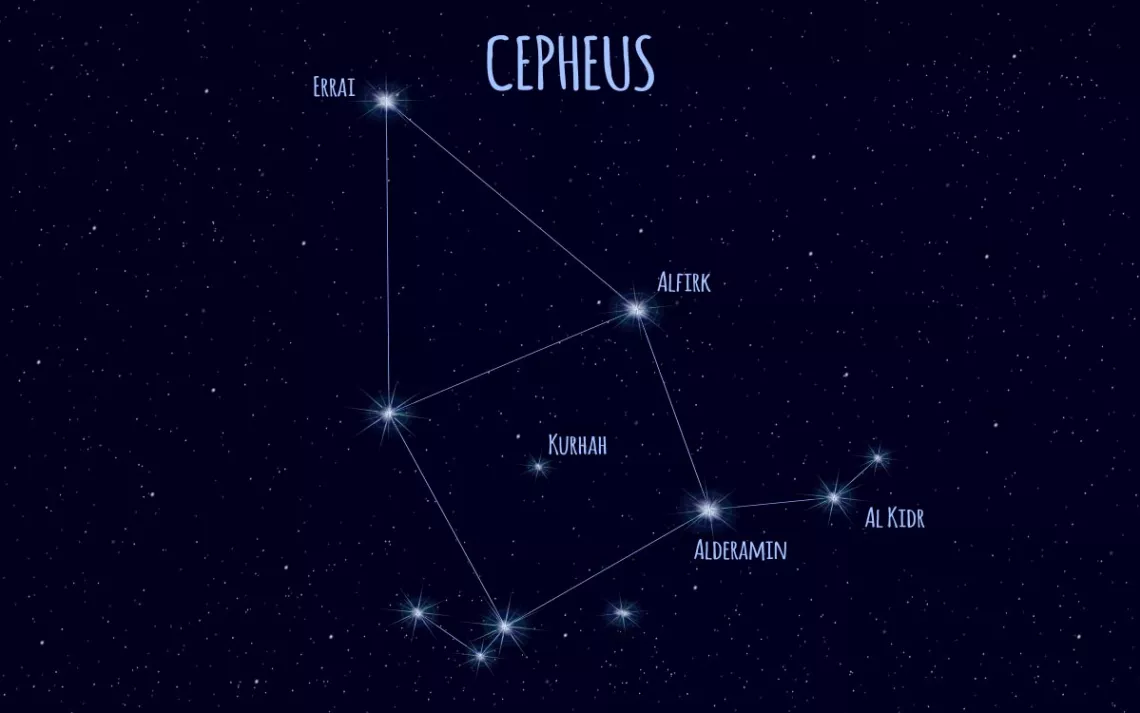March Astronomical Highlights: Cepheus and a Distant Star
The night sky shines with faraway stars and northern lights

Illustration by Jazziell/iStock
Mars is the only clearly visible planet in the evening sky this month. It coasts through Aries, approaching the Pleiades star cluster in Taurus by early April. March is the perfect month for Mars to reign alone, because the name March comes from the Roman god of war, for which the planet is also named.
The other classic planets (those that can be seen without optical aid and have been known since ancient times) are either hiding too close to the sun to be visible (Mercury) or holding court in the morning sky. With the start of daylight saving time on Sunday, March 10, fewer people will be awake in the predawn darkness to spot Jupiter, Saturn, or Venus.
After sunset on March 7, look for a slender crescent moon. On March 10 and 11, it will be passing by Mars. Full moon occurs on March 20, the same date as the Northern Hemisphere’s spring equinox (the equinox arrives at 2:58 P.M. PDT, and the full moon reaches 100-percent lit at 6:43 P.M.).
The Northern Lights
One curious phenomenon that happens around the spring and fall equinoxes is an uptick in auroras. While scientists do not yet fully understand why this is, it’s smart to keep an eye out on clear nights for an unexpected glow along the northern horizon. Sometimes solar activity warns us in advance that the Northern Lights might be appearing, and other times they just mysteriously arrive, dancing along the edges of the sky as if reflecting off the snowy terrain of the far north.
Cepheus the King
While you’re concentrating on the northern horizon, look for the constellation Cepheus, which is nearly due north, hovering just a bit above the ground and resembling the shape of a child’s drawing of a square house with a triangle roof. Cepheus the King has a number of remarkable stars for such a little constellation.
Mu Cephei, or the garnet star, is named after its color. This red supergiant is one of the largest stars known. If our sun were the garnet star, its surface would extend beyond the orbit of Saturn.
The garnet star can be found at the bottom of the “house,” where the welcome mat for a front door might be. It shines at magnitude 3.2—not particularly bright, but it should be observable without optical aid in non-light-polluted areas. With binoculars, you should see the reddish star with no trouble. Mu Cephei is approximately 2,400 light-years away, making it one of the most distant stars you can see with the naked eye.
While you’re gazing at Cepheus, don’t forget to also check out the star that sits at the peak of the “roof.” This star is known as Gamma Cephei or Alrai/Errai—it’s a binary star, and one of the components is believed to have an extrasolar planet. Alrai is also remarkable because in the year 3000 AD, it will become the new northern pole star. Currently Polaris holds that title, but with the precession of the equinoxes (or the wobble of Earth as it spins), the North Pole will eventually point to Gamma Cephei.
 The Magazine of The Sierra Club
The Magazine of The Sierra Club



